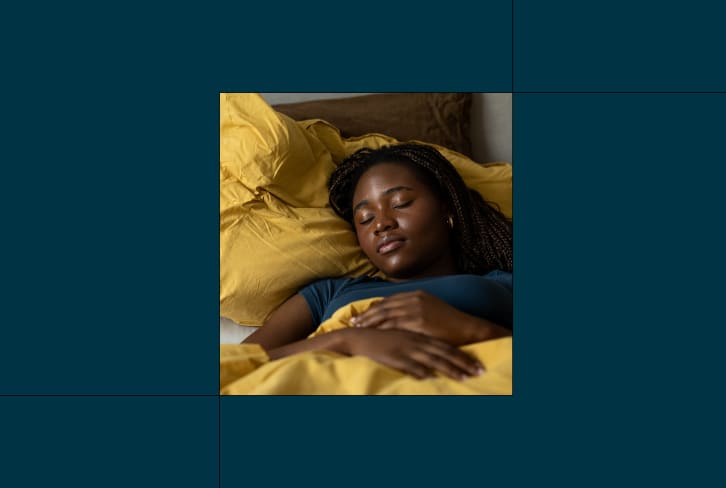Advertisement
5 New Studies That Could Transform Women's Health In The Years Ahead


So much of what we're taught about our health—from what constitutes a "normal" BMI to what a heart attack feels like—comes from research on men. Women have historically been left out of medical studies for reasons that range from the frustrating to downright infuriating. And as we've previously reported, this gender gap has serious implications for women's physical and mental health.
In her new book, All in Her Head: The Truth and Lies Early Medicine Taught Us About Women's Bodies and Why It Matters Today, breast cancer oncologist Elizabeth Comen, M.D., asks, "What would medicine look like if all the female energy that was squeezed out and sidelined from it over the course of two millennia was allowed back in?" Well, thankfully, we're starting to see. Thanks to a rise in more targeted women's health research, the nuances of the female body are finally coming to the fore of Pubmed and ScienceDirect pages everywhere.
In honor of International Women's Day, we're highlighting a few impactful examples of female-focused research from the last few months, complete with insights from our science and health team. Here's to getting one step closer to discovering why women experience increased rates of autoimmune disorders, sleep disturbances, and more—and how we can change this in the future.
Editor's note
PMS symptoms are not benign. They're linked to early menopause
We're often told that PMS symptoms just "come with the territory" of having a period. But a recently published study in JAMA Network shows they can have reverberating consequences throughout a woman's lifetime. The study found that women with symptoms of premenstrual disorders tend to reach menopause about a year earlier than those who don't. Their menopause symptoms—from hot flashes to changes in mood—also tend to be more severe.
As mindbodygreen's assistant health editor Hannah Frye reports, "While researchers don't have an explanation for the correlation just yet, it could have something to do with preexisting hormone levels or imbalances in women, given that PMS is believed to be caused by a dramatic drop in estrogen and progesterone... [It's] critical for health care providers to take PMS symptoms seriously and consider working toward hormonal balance to address the root cause rather than just alleviating symptoms for the time being." (Read the research here1.)
Study insights
—Emma Engler, mindbodygreen's nutrition research scientist
Eight in 10 autoimmune disease cases are in women — and we're getting closer to understanding why
Autoimmune diseases like Type 1 diabetes, rheumatoid arthritis, thyroid disease, and multiple sclerosis disproportionately affect women, and nearly eight in 10 cases2 are in those assigned female at birth. Last month, researchers at Stanford School of Medicine got closer to untangling why—and it comes down to the XX chromosome.
Since women have two X chromosomes, as our bodies develop, we essentially need to "shut down" the cellular activity of one X chromosome to prevent overproducing certain proteins. Researchers found that RNA that regulates this process may be an important driver of sex-biased autoimmunity. (It's worth noting that we are just learning this now because, for several decades, researchers used a male cell line as the standard of reference in autoimmune susceptibility.) This is a potentially groundbreaking finding, as it could improve our ability to predict autoimmune disorders—currently affecting 19 to 40 million women in America—before they occur. (Read the research here3.)
Study insights
—Hannah Frye, mindbodygreen's assistant beauty & health editor
We desperately need more sports & exercise focused on (and conducted by) women
Women are severely underrepresented in sports and exercise research, and most of the studies that do focus on women are senior authored by men. (Sigh.) A new analysis, "Invisible Sportswomen 2.0," digs into the urgent need for more sports research by women for women. It reiterated that between 2014 and 2020, as little as 6% of sports and exercise science research in the most popular journals was conducted exclusively in female participants. It also found the women's sports studies that did have women authors tended to be of higher quality across all journals. (Read the paper here.)
These two vitamin deficiencies are wrecking women's sleep
Women are more likely to suffer from sleep issues like insomnia4 than men, and new research suggests that vitamin deficiencies could be partially to blame. Research in nearly 10,000 adult women (20-49 years old) found that 20% of those surveyed had iron deficiency or iron deficiency anemia, aka low iron and hemoglobin levels. (The blood loss during menstruation makes iron deficiency way more common in women.) Women who had these deficiencies were nearly twice as likely to have poor sleep quality as those who did not. Those who had insufficient or deficient vitamin D levels were also 22-26% more likely to sleep less.
This research on the unseen factors affecting sleep suggests that something as simple as upping vitamin D and iron intake could help premenopausal women achieve more restorative rest. (Read the research here5.)
Study insights
Bundle up: Cold plunging might have bonus benefits for pre- and post-menopausal women
When over 1,000 women in the UK filled out a survey on the benefits of their cold-water swimming routines, the majority of them (63.3%) reported that they swam specifically to relieve period or menopause symptoms. Menopausal women noted improvements in anxiety (46.9%), mood swings (34.5%), low mood (31.1%), and hot flashes (30.3%) after a chilly dip, while premenopausal women said swimming reduced menstrual symptoms like anxiety (46.7%), mood swings (37.7%), and irritability (37.6%). Cold plunging often has a macho biohacking connotation, but this research shows the unique ways women can benefit from braving freezing temps, too, both mentally and physically. (Read the research here6.)
6 Sources
- https://jamanetwork.com/journals/jamanetworkopen/fullarticle/2809669
- https://www.ncbi.nlm.nih.gov/pmc/articles/PMC7292717/?
- https://www.cell.com/cell/fulltext/S0092-8674(24)00002-3?
- https://www.ncbi.nlm.nih.gov/pmc/articles/PMC7714764/
- https://www.sciencedirect.com/science/article/abs/pii/S002231662372751X
- https://journals.sagepub.com/doi/10.1177/20533691241227100
Watch Next
Enjoy some of our favorite clips from classes
Enjoy some of our favorite clips from classes
What Is Meditation?
Mindfulness/Spirituality | Light Watkins
Box Breathing
Mindfulness/Spirituality | Gwen Dittmar
What Breathwork Can Address
Mindfulness/Spirituality | Gwen Dittmar
The 8 Limbs of Yoga - What is Asana?
Yoga | Caley Alyssa
Two Standing Postures to Open Up Tight Hips
Yoga | Caley Alyssa
How Plants Can Optimize Athletic Performance
Nutrition | Rich Roll
What to Eat Before a Workout
Nutrition | Rich Roll
How Ayurveda Helps Us Navigate Modern Life
Nutrition | Sahara Rose
Messages About Love & Relationships
Love & Relationships | Esther Perel
Love Languages
Love & Relationships | Esther Perel

















